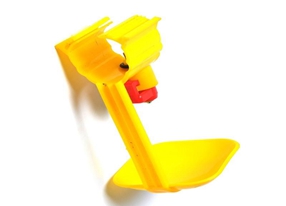High-Performance Evaporative Cooling Pads for Greenhouses
Sep . 04, 2024 19:21 Back to list
High-Performance Evaporative Cooling Pads for Greenhouses
Evaporative Cooling Pads for Greenhouses Enhancing Climate Control
In the pursuit of optimal growing conditions for plants, greenhouse owners are increasingly turning to innovative technologies to regulate temperature and humidity
. One such technology that has gained popularity is evaporative cooling pads, which offer an effective and energy-efficient solution for maintaining a stable climate within the greenhouse environment.Evaporative cooling pads operate on a simple yet effective principle as water evaporates, it absorbs heat from the surrounding air, thereby cooling it down. This process can significantly lower the temperature in a greenhouse, even in the hottest summer months. The pads are usually made from materials such as cellulose or synthetic fibers, which are designed to maximize the evaporation surface area, enhancing the cooling effect.
The installation of evaporative cooling pads is relatively straightforward. Typically positioned on one side of the greenhouse, these pads are connected to a water supply system. When activated, water is drawn through the pads, saturating their surfaces. A fan then pulls warm air from the greenhouse through the moist pads. As the air passes through, it cools down before circulating back into the greenhouse, thus creating a refreshing environment for plants.
evaporative cooling pads greenhouse

One of the most significant advantages of utilizing evaporative cooling pads is their energy efficiency. Unlike traditional air conditioning systems, which rely on electricity to cool air, evaporative cooling systems use a natural process that requires far less energy. This not only results in lower operational costs but also makes the system more environmentally friendly, aligning with the sustainable practices that many greenhouse operators strive to adopt.
Moreover, the benefits of using evaporative cooling pads extend beyond just temperature control. These systems also help maintain increased humidity levels, which can be particularly advantageous for certain crops that thrive in moist conditions. This dual functionality allows growers to create an ideal microclimate for their plants, potentially leading to improved growth rates and higher yields.
However, it is essential for greenhouse owners to consider the relative humidity of their environment since evaporative cooling works best in hot, dry conditions. In areas with high humidity, this system may not be as effective, making it crucial to assess local climate conditions before installation.
In summary, evaporative cooling pads present a practical and efficient solution for managing temperature and humidity in greenhouses. With their low energy consumption, ability to maintain optimal growing conditions, and environmental benefits, these pads are becoming an indispensable tool for modern greenhouse management. As the agriculture sector continues to evolve, incorporating such innovative technologies will be vital in meeting the increasing demand for sustainable and efficient farming practices.
-
Automatic Feeding Line System-Pan Feeder Nipple Drinker|Anping County Yize Metal Products Co., Ltd.
NewsJul.29,2025
-
Hot Sale 24 & 18 Door Rabbit Cages - Premium Breeding Solutions
NewsJul.25,2025
-
Automatic Feeding Line System Pan Feeder Nipple Drinker - Anping County Yize Metal Products Co., Ltd.
NewsJul.21,2025
-
Automatic Feeding Line System Pan Feeder Nipple Drinker - Anping County Yize Metal Products Co., Ltd.
NewsJul.21,2025
-
Automatic Feeding Line System - Anping Yize | Precision & Nipple
NewsJul.21,2025
-
Automatic Feeding Line System - Anping Yize | Precision & Nipple
NewsJul.21,2025






